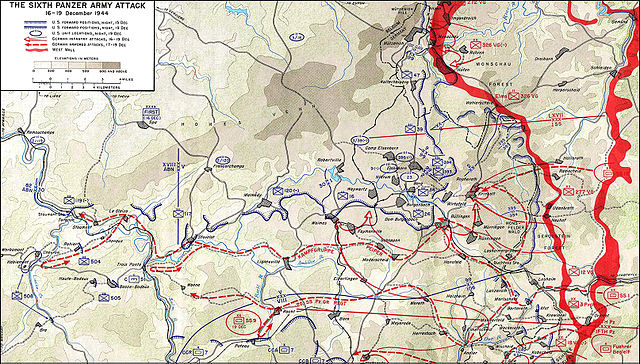99th Infantry Division (United States)
The 99th Infantry Division briefly existed, but never deployed, in the closing days of World War I, was reconstituted as a reserve unit in 1921, was ordered into active military service in 1942, and deployed overseas in 1944. The 99th landed at the French port of Le Havre and proceeded northeast to Belgium. During the heavy fighting in the Battle of the Bulge, the unit suffered many casualties, yet tenaciously held its defensive position. In March 1945, the 99th advanced into the Rhineland, crossing the Rhine River at Remagen on March 11. After fighting in the Ruhr area, the unit moved southward into Bavaria, where it was located at the end of the war.
99th Infantry Division (United States)
Danube river near Eining, Germany
99th Division riflemen man a foxhole near Rocherath, Belgium. 1 February 1945.
The Battle of the Bulge, also known as the Ardennes Offensive, was the last major German offensive campaign on the Western Front during World War II which took place from 16 December 1944 to 25 January 1945. It was launched through the densely forested Ardennes region between Belgium and Luxembourg. The offensive was intended to stop Allied use of the Belgian port of Antwerp and to split the Allied lines, allowing the Germans to encircle and destroy each of the four Allied armies and force the western Allies to negotiate a peace treaty in the Axis powers' favor.
American soldiers of the 117th Infantry Regiment, Tennessee National Guard, part of the 30th Infantry Division, move past a destroyed American M5A1 "Stuart" tank on their march to recapture the town of St. Vith during the Battle of the Bulge, January 1945.
Situation on the Western Front as of 15 December 1944
Sepp Dietrich led the Sixth Panzer Army in the northernmost attack route.
Scene of the Malmedy massacre







